
E-mail: font@focusonnature.com
Phone: Toll-free in USA 1-888-721-3555
or 302/529-1876
 |
PO Box 9021,
Wilmington, DE 19809, USA E-mail: font@focusonnature.com Phone: Toll-free in USA 1-888-721-3555 or 302/529-1876 |
Highlights
FROM some past
FOCUS ON NATURE TOURS
in CHILE
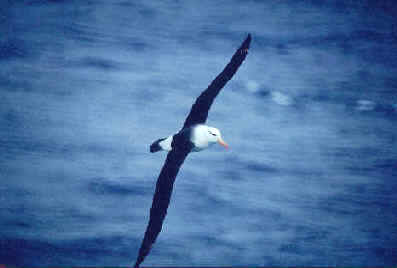
The
following summaries here are with the most-recent tours first.
For some tours there are links below for longer narratives. Also there are links
to UPCOMING TOUR ITINERARIES, and lists (some with photos) of BIRDS, MAMMALS,
and OTHER NATURE.
Previous Tours:
November 2011 November/December 2009 November 2007 November 2005
November
2004 November
2003 November
2002 October/November
2001
In all, there have been
19 FONT birding & nature tours in
Chile.
Links:
Upcoming
FONT Birding & Nature Tours in Chile
A
List & Photo Gallery of Chile Birds, in 2 Parts
Albatrosses & Other Seabirds during FONT Chile Tours (with some photos)
Mammals of Chile (with some photos)
Butterflies & Moths in Chile (with some photos)
Amphibians & Reptiles in Chile (with some photos)
The Diverse Plant-life of Chile (with some photos)
A Feature with Some Poems about Birds by Pablo Neruda (with photos)
![]()
Among the birds
that were enjoyed during our
November 2011
tour in
Chile, from the
Andes Mountains
to the
Pacific Ocean, and from Santiago south to
Chiloe Island,
were these:
Andean Condors, Burrowing and Slender-billed Parakeets, Humboldt and
Magellanic Penguins, Gray-breasted Seedsnipes, the Many-colored Rush
Tyrant, the Austral Negrito, the Crag Chilia, Snowy-crowned Terns,
Great Grebes, Kelp Geese, the Flightless Steamer Duck, and Black-necked
Swans, with cygnets riding on their backs.
We saw 3 species of oystercatchers and 4 species of cormorants,
including the most beautiful of the latter, the Red-legged Cormorant.
Among the mammals were a Kodkod (a wild cat), a Pudu (a
wild deer), a Grison, an Akodont (a vole-like South
American mouse), and the Marine Otter or Chungungo (a close
relative of the Sea Otter of the Northern Hemisphere).
Links:
More about the FONT Chile Tour in November 2011
A Gallery of Photos from our November 2011 Chile Tour
List
of Birds & Other Wildlife during the FONT Chile Tour - November 2011
Some
Highlights from Previous FONT Chile Tours
![]()
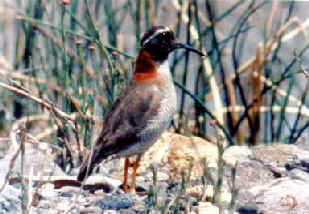
An extraordinary bird, the
Diademed Plover
was seen well
during the FONT Nov/Dec 2009 Chile Tour.
Chile - November/December 2009
The first Focus On Nature tour ever was in Chile
in November 1990. 19 years later, in 2009,
from November 22 to December 4, we were
there again. Chile was a great destination for our first tour, and in 2009, it
still was!
Our highlights in 2009 were many.
Probably foremost among them was a very close and cooperative Diademed Plover.
When we saw that bird back in 1990, its English name was then the Diademed
Sandpiper-Plover. About 20 years later, in its preferred name, the
"sandpiper" had been dropped. But whatever its common name, that
absolutely striking bird of mostly the high Andes was as much of a thrill for us
to see in 2009 as it was two decades earlier.
Our 2009 tour was the 18th for FONT in Chile.
And, even so, we managed to enjoy a spectacle, and a bird species that we had
never previously seen.
Late one day, with a backdrop of Andean mountains, and purplish-blue twilight
sky, we watched as about 500 Burrowing Parrots arrived at their roost for
the night. Most flew into their burrows. Some perched on snags on the big cliff
that was the dormitory for the birds. Rather like small macaws, the Burrowing
Parrots were so raucously noisy that evening across the gorge from us on the
large cliff. Our evening with them was another highlight of the tour.
And yet more tour highlights were had during our time on Chiloe
Island in southern Chile. During a late-afternoon along the seacoast,
when the weather was absolutely beautiful (it is not always that way on
Chiloe Island), we enjoyed wonderful looks of both Humboldt and Magellanic
Penguins, a family of Kelp Geese, pairs of Fuegian (or Flightless)
Steamer Ducks, both Rock and Imperial Shags, a massive
swarm of shearwaters and other seabirds, and a mammal never
before seen during a FONT tour. That mammal is a counterpart in the Southern
Hemisphere of the Sea Otter in the North Pacific. Smaller than the Sea Otter, it
is called the Marine Otter, or locally, in Spanish, the "Nutria
del Mar" ("of the sea"). It is a rare animal.
Late that afternoon as we were leaving that wonderful seaside-spot, we saw
another animal that's rarely seen. A small and shy deer, called the Pudu,
it was standing still on the right side of a dirt road in front of our vehicle.
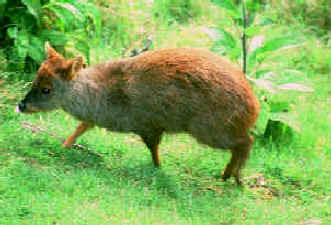
The small, shy Chilean
deer called the Pudu
The next morning,
further south on Chiloe, we walked along the
edge of a mudflat by a sheltered cove of the sea on the east side of the island.
It was a nice place that's certainly found to be so by Hudsonian Godwits
from North America. There were about 2,500 of them, by us, feeding tamely on the
flats.
And yet another highlight of our tour occurred the next day on Chiloe
Island. After we stopped our vehicle and got of it in the forest,
there was a nearby loud call followed by loud tapping. At eye-level very near
us, there were 2 female Magellanic Woodpeckers. We stood rather still,
and we were rather quiet. Another loud call was given, a short while later,
behind us, followed by a male Magellanic Woodpecker flying in, to also be
closely in front of us, at eye-level, and brilliantly seen in the sunlight.
Here in capsule form, were some of the highlights of our 2009 FONT Chile Tour.
You may read more about these birds and mammals, and others, in the narrative
reached from the link below.
Links:
More
about the FONT Chile Tour in November/December 2009
List
of Birds & Other Wildlife during the FONT Chile Tour - November/December
2009
![]()
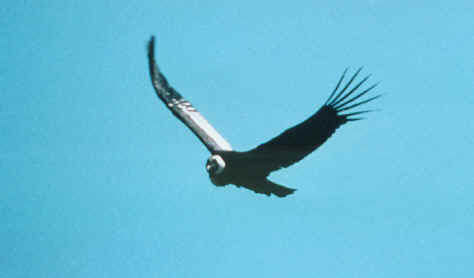
During our
November 2007 Chile tour,
we saw over a dozen Andean Condors fly by in procession.
In all during the tour, we saw from 15 to 20.
CHILE -
November 2007
There was a pelagic
trip offshore from Valparaiso that was again, as it always has been,
a part of our annual FONT birding & nature tour in Chile.
And again, during that boat-trip, on November 23, 2007, some "very good
birds" were seen.
But this time, the "best" of them were 2 Northern Royal Albatrosses,
both seen sitting on the water very close to us. Those large albatrosses, so
big, even seemed to dwarf the other 3 species of Albatrosses that were
either on the water or flying by us in the air: the Black-browed, the Buller's,
and the Salvin's.
The wingspan of the Northern Royal Albatross is as much as 138 inches (that's
11.5 feet, or nearly 6 feet per wing!) Wow, what a bird to see as we did!
The plumages of the 2 individuals were a bit different; one was an adult, and
the other nearly so.
The wingspan of the Salvin's Albatross is 98 inches. That of the Black-browed,
88 inches; the Buller's, 83 inches. So these wingspans (of the
albatrosses also known as "Mollymawks") are
in the realm of 7 to 8 feet in length - that is each wing being from about 3.5
to 4 feet long.
Those albatross-wings enabled the birds to fly a long way. 3 of our 4 albatross
species flew from New Zealand breeding sites to the offshore Chilean waters
where we saw them. We only went offshore a couple hours out, and a couple hours
back to land. It's 9.647 kilometers (one-way) from New Zealand to Chile.
For those of us who flew by jet from North America to Chile, as a comparison,
it's 6,959 kilometers (one-way) from New York.
The 3 species of albatrosses that crossed the Pacific (the Northern
Royal, the Salvin's, and the Buller's) traveled
further to see us than we did to see them (referring to our flights in planes
from places such as Texas and Pennsylvania). And, yes, those albatrosses certainly
did see us too, as "chum" was tossed from the boat, attracting the
oceanic birds by scent from miles around.
Not only were the albatrosses drawn in. There were many other seabirds
also in the waters around us, including shearwaters, petrels, giant-petrels,
storm-petrels, pelicans, gulls, terns, boobies, and phalaropes. The
last of these, the Red Phalaropes, actually were not attracted to the
"chum", but there were many this year, as we estimated that we saw
about a couple thousand of them.
On land, during our November '07 Chile Tour,
there was another wonderful encounter with a big bird - one of the biggest of
American birds that soars in the sky. The Andean Condor has a wingspan of
up to 122 inches. That's over 10 feet. The Andean
Mountains, that were the backdrop to condors were saw, were
also big. But still, how impressive it was to see a dozen condors, fly by
between us and the mountain, one after the other, from right to left, as if in a
parade. The grouping was a mix of adult and immature birds.
A bird with "Giant" in its name has already been alluded to here. The Southern
Giant Petrel has a wingspan of 81 inches (almost as long as that of the Buller's
Albatross - and almost as long as that of another of our
"biggies", the Peruvian Pelican which has wingspan of 90
inches).
In the mountains, we saw another bird named "Giant". With a length of
up to 9 inches, it was the Giant Hummingbird, the largest of the 320 or
so species in that family (which is, by the way, the second largest of bird
families in the Americas, and which contains, at the far end of the scale from
the Giant Hummingbird, the smallest bird in the world).
During our November 2007 tour in central Chile, we saw over 125 species of
birds, during the 17th FONT tour in that country. The first FONT birding &
nature tour anywhere was in Chile, back in November 1990.
Click the link above for more regarding the birds we saw during this, our
latest, Chilean tour.
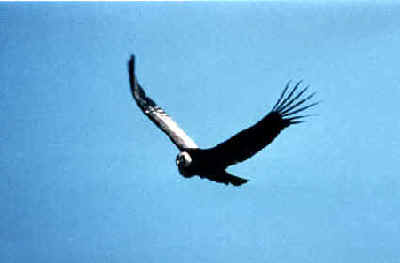
During our
November 2007 Chile tour,
we saw over a dozen Andean Condors fly by in procession.
In all during the tour, we saw from 15 to 20.
Links:
More about the FONT Chile Tour in November 2007
List of Birds during our Chile Tour - November '07
List of Birds during FONT Chile Tours (with photos)
Upcoming
FONT Chile Birding & Nature Tours
![]()
The following account written by Armas Hill, leader
of the tour:
As part of the November 12-25, 2005 FONT Chile Birding & Nature Tour, there was, on
November 14, a half-day pelagic Trip from Valparaiso. It was the 16th such pelagic trip for FONT. During most years, since 1990, this pelagic trip has been in November.Over the years, many seabirds have been seen during this
Valparaiso pelagic. Some years, the number of birds has been quite high, when there have been thousands of Sooty Shearwaters and thousands of phalaropes. This year, that was not the case, as the number of Sooty Shearwaters was small, and no phalaropes were seen. Some years, the waters of the Humboldt Current off Chile have been filled with seabirds that reside there exclusively. Species in that category include Guanay Cormorant and Peruvian Boobies. This year, numbers of both of those species seemed to be lower than usual.The ocean off the Chilean coast can have not just high numbers of birds, but also a good variety of species. During our trip this year, there was an excellent variety, even though, as noted, some of the numbers, that given day, were down.
Seabirds come to that area of the Pacific Ocean, off Chile, from various places far away. Some of the Albatrosses (including the Salvin's and the Buller's) come from New Zealand, on the opposite side of the Southern Pacific. Other birds also come from there, including the rare Westland Petrel.
During our Chile Valparaiso pelagic this year, the bird that was the highlight came from New Zealand, where the species breeds. It was the Northern Royal Albatross. We've previously seen the Southern Royal Albatross during our trips over the years (at least once, maybe twice), but this was the first time for the Northern. What an exciting bird our Northern Royal Albatross was to see. It's big, very big. Its wingspan is as much as 138 inches. That's 11-feet, 6-inches, meaning that each wing is as much as 5-feet, 9-inches, the height of many people.
We saw the Northern Royal Albatross well, with those long wings in flight, and also as it was resting near us on the water. When the bird would take off from the water to fly, each time we watched its feet patter along the surface for 2 or 3 seconds, before the bird would become airborne. Our Northern Royal Albatross on Nov. 14, '05 was an immature bird.
When it was resting on the water near us, next to the Salvin's Albatross, the Northern Royal dwarfed that species, which is no small bird itself. The wingspan of the Salvin's Albatross is as much as 98-inches, or about 8-feet, or 4-feet per wing. We saw a few Salvin's Albatrosses, during our trip. And, there was yet another Southern Albatross, the Black-Browed.
During our Chile Pelagic Trips, since
1990, we've seen 9 species of Albatrosses:
Northern Royal
Southern Royal
Black-browed
Salvin's
Shy (or White-capped)
Chatham
Buller's
Gray-headed,
and Waved.
Other seabirds during our Nov. 14, 2005
pelagic, from Valparaiso, Chile were:
the Westland Black Petrel (as noted, from New Zealand), the White-chinned,
and Cape Petrels (the latter known as the Pintado), the DeFilippi's
Petrel (a pterodroma very similar to the Cook's Petrel), the Southern
Giant-Petrel (one followed us nearly all the way back to shore), the Southern
Fulmar, the Pink-footed and Sooty Shearwaters, the Humboldt
Penguin, Peruvian Booby and Peruvian Pelican, Guanay and Red-legged
Cormorants.
Gulls
included the Kelp, and this year many Franklin's Gulls. It's
interesting how Franklin's Gulls can be on the ocean off the Chilean
coast, revising their life-style in the Southern Hemisphere. In the Northern
Hemisphere, of course, they breed far from the sea, in the interior of the
United States and Canada. A Sabine's Gull was also with the seabirds
around our boat off the Chilean coast, where we also saw an astonishing 6
species of Terns Common, Arctic, South American, Trudeau's, Elegant, and Inca.
It was a good day at sea. And the rest of our tour, on land, throughout Chile,
was good too.
During the tour, actually a number of large birds were seen, in addition to the Northern
Royal and Salvin's Albatrosses just mentioned. The Peruvian
Pelican (also called the Chilean Pelican) is large. Its
wingspan is 90 inches, or just under 8 feet. (As a comparison, the
closely-related Brown Pelican of mostly North America has a wingspan of 84
inches; but the American White Pelican is larger, with a wingspan of 108
inches.)
During our Chile tour, again in '05, the largest of all American flying birds
was seen, the Andean Condor. Its wingspan is as much as 122 inches, or
just over 10 feet. We enjoyed watching condors in the mountains as they soared
seemingly without effort in the sky, and as one landed on a cliff-ledge not too
far away. We watched that bird there through a telescope.
Also large in their categories, during our tour, were two birds named
"Giant". The Giant Coot, on the high-altitude Andean lakes of
far-northern Chile, is aptly the largest of the coots (and it has big
"over-sized" red-legs and feet). And the largest of all of the over
300 species of hummingbirds in the Americas, was sought & seen, the Giant
Hummingbird. That big hummingbird is as long as 8 to 9 inches, nearly
as long as an American Robin (or other comparable thrushes throughout the
world).
Yet another notable large bird was seen, in the northern part of the Lake
District of southern Chile. It was a Cocoi Heron, the largest of the
American herons. That bird was also a first - the first of that species ever
seen by us in Chile, during our 16th tour in that country.
We had another "first" during '05 Chile Tour (in addition to the
fore-mentioned Northern Royal Albatross and the Cocoi Heron).
Among a flock of Whimbrel, along the seacoast north of Valparaiso, we saw
our first Marbled Godwit in Chile. That's rather far south for that
species. It occurs sparingly as far south as along the Pacific coast of northern
South America. According to "the book" (the "Birds of
Chile" field guide by Alvaro Jaramillo), the Marbled Godwit is a
vagrant in Chile, with about 5 previous records.
There were some other birds during our tour that may well have been the
"furthest south" for the species at the time. They were in
far-northern Chile. In Putre, a town high in the Andes, a Sparkling Violetear
was where we've seen it in previous years. In Arica, we saw 2 Killdeer.
That species certainly does not get much further south (if at all). In
that same river valley, near Arica, we saw a lone Groove-billed Ani sitting
near the top of a bush. It was unusual in that it was by itself (anis
are usually in flocks), and also because it may have been the
"southernmost ani" as it sat there much like a partially-hidden
sentinel.
A bird that was south of where it belongs (again according to "the
book", Jaramillo's guide to the "Birds of Chile") was a Spectacled
Tyrant that we saw on Chiloe Island in southern Chile. There was no mystery
as to the identity of the bird as it sat, continuously, in clear view on the top
of a shrub.
Seeing that tyrant was just one of the nice aspects of our visit to Chiloe
Island. It was our first time to that rural, pastoral island, along
the southern Chilean coast. For much of that day, the sky was a clear blue, and
the fields and pastures were as green as Ireland. From the ferry to the island (that's
the only way to get there), penguins were propelling in the water
close to the boat. Sea-lions came in and began to do the same. Sooty
Shearwaters, White-chinned Petrel, Peruvian Pelicans, and various gulls and
terns were flying above the surface of the water. On the water, we had good
looks at Imperial Shags (beautiful black-and-white cormorants). Along
the shoreline as we approached the island, there were dozens of swans that
were also black-and-white. In the bright sunlight on the water, those Black-necked
Swans were a wonderful sight.
On the island, we visited, in a spectacular setting along the seacoast, an
interesting penguin colony where 2 species breed. It was fun to watch
both the Magellanic and the Humboldt's Penguins, on the slopes of
the islands, on the rocks, and particularly as they were leaping from the surf
of the sea to the rocks. Also nice to see, at that site, were Rock
Cormorants, Flightless Steamer-Ducks, and Kelp Geese, including a
family of the last of these with the all-white male, the attractive dark-brown
& white female, and the small all-white goslings.
During our visit to Chiloe Island, we had a "full-deck" of Oystercatchers,
3 species: Magellanic, Blackish, and American. And, it was also
nice to see, on Chiloe Island, the Chiloe Wigeon. That's a name of a duck also
known as the Southern Wigeon. But something seems special about seeing it
on the island, as it's the only bird so-named (although there are a few
birds, of various kinds, with distinctive subspecies on Chiloe). Wherever
that wigeon is seen, it should noted, however, that in the sunlight the
male is beautiful with its pattern of black, white, and tan, and the shining
green on its head.
For our future visits to Chiloe Island, there are yet other experiences to be
had. Along the seacoast, there's a rare animal, the Marine Otter, a close
relative of the Sea Otter of the Northern Hemisphere. And, from the Northern
Hemisphere, about 25% of the world's Hudsonian Godwits winter on Chiloe
Island. Also, there's a national park with verdant forest in which birds such as
the Magellanic Woodpecker and Black-throated Huet-Huet (a tapaculo)
reside.
Where one arrives by ferry on Chiloe Island, there's a town named Chucao. That's
also the name of a tapaculo in southern Chile. We didn't see a tapaculo
in that town (one wouldn't), but we did have some tremendous looks at the
Chucao Tapaculo, in the forest of the Lake District. Other highlights in
that area included the Torrent Duck along a rushing river, and in the
more-open country, flocks (numbering hundreds) of Slender-billed
Parakeets in the trees, and a very large flock of Chilean Pigeons (ruddy
with their white collars) on the ground. Both of these species, the parrot
and the pigeon, are endemic to Chile, and both are classified as being globally
"near-threatened" species.
Chile is certainly a land of contrasts. In that long, narrow country, it's like
an inverted trip from British Columbia to Baja California. As green as Chiloe is
in the south, Arica, in the far-north is
brown. In the nearby Atacama Desert, it's
said that it never rains. In parts there, it's just dirt. As one ascends into
the higher elevations of the Andes, the vegetation increases, first with only a
few cacti, then with more shrubs and alpine plants. On those plants, the
Guanacos and Vicunas feed. At the high-altitude lakes, there are flamingoes,
grebes, ducks, and shorebirds of various kinds. Smaller landbirds are
a cast of characters only in the high country, including various cinclodes and
canasteros, along with sierra-finches and others. Another animal
there is the odd Viscacha, with the ears of a rabbit, and the tail of a
squirrel.
Back down at Arica, at virtually sea level, Gray Gulls in numbers,
noisily made their presence known along the coast. When them, also in large
numbers, were Elegant Terns and Franklin's Gulls. On coastal
jetties, there were Turnstones and Surfbirds. Birds such as the Franklin's
Gulls and Surfbirds came from North America where they nested. In
contrast, the Gray Gulls only came from their nearby breeding sites in
the rainless, treeless, Atacama Desert. They are the only birds to nest there.
Near brown Arica, there's one place,
visited during our last day, that's filled with colorful flowers - and
"filled with" hummingbirds. 3 species were there: the
most-common of them the Oasis Hummingbird; also the Chilean Woodstar and
the Peruvian Sheartail (the male of the last of these is quite a
sight!). It's interesting that the little Chilean Woodstar is probably
endemic not only to Chile, but to Arica! It's just one of the wonderful birds to
be found in Chile, where, as noted, it's like going from British Columbia to
Baja California in reverse, with also some high Andean mountains and some
albatrosses on the ocean thrown in for good measure.
Chile was the first far-away place to be visited during a FONT tour, back in
November 1990. Now, 15 years later, it was great to be there again in 2005.
Here are "Top Birds" of the November 2005
Chile Tour, as voted after the tour:
1 - Northern Royal Albatross
2 - Penguins (both species: swimming, standing, jumping, whatever
they were doing)
3 - Striped Woodpecker
4 - Spectacled Tyrant
5 - Many-colored Rush-Tyrant
6 - Torrent Duck
7 - Silvery Grebe
8 - Chucao Tapaculo
9 - Inca Tern
10 - Andean Condor
First runner-up: the Kelp Geese family.
Link:
List of Birds & Other Wildlife during the FONT Chile Tour - November 2005
![]()
CHILE (central) -
November 2004
During our annual FONT birding tour in Chile, in November 2004, we conducted on November 15th our 15th pelagic trip to Humboldt Current waters offshore from Valparaiso.
This time, we probably saw MORE SEABIRDS during the trip than we have during any other. The vast majority of them, SOOTY SHEARWATERS.
As we left shore, there were swarms of birds ahead of us on the horizon. We headed in that direction, and soon we were among them, in masses of SOOTY SHEARWATERS all around us. Mostly they were in their swift flight. The experience was incredible. As we plowed through, there were also large flocks of PHALAROPES sitting on the water and flying (mostly RED, some RED-NECKED). Big flocks flew by FRANKLIN'S GULLS. As we continued, and the numbers of SOOTY SHEARWATERS around us began to decrease, those of PINK-FOOTED SHEARWATERS increased. There were thousands of them.
Our estimates were "a hundred
thousand" or more SOOTY SHEARWATERS,
5,000 or more PINK-FOOTED SHEARWATERS,
2,000 or more FRANKLIN'S GULLS,
and 3,000 PHALAROPES (about 10 to 1, RED to RED-NECKED)
And, there were other SEABIRDS,
particularly as we "chummed" by tossing out from the boat fish-parts
and fish oil.
We were surrounded, as we did that, by ALBATROSSES, GIANT-PETRELS, PINTADOS (or
CAPE PETRELS), WHITE-CHINNED PETRELS, STORM-PETRELS, BOOBIES ,FULMARS, GULLS,
TERNS and PELICANS.
A single PERUVIAN DIVING-PETREL flew by.
The ALBATROSSES (or MOLLYMAWKS) were BLACK-BROWED (10) and the SALVIN'S (6).
There were 12 CAPE PETRELS, 3 SOUTHERN FULMARS, 6 SOUTHERN GIANT-PETRELS, and 50
WHITE-CHINNED.
Attracted to the chum slick were over 30 WILSON'S STORM-PETRELS. Numbers by the
boat of PERUVIAN BOOBIES and PERUVIAN (or CHILEAN) PELICANS were also about 30
each. There were about 20 SOUTH AMERICAN TERNS and 10 INCA TERNS. KELP GULLS
were about 200 around us.
With all the birds, it was odd not to get a species less common for Chile, as we often have in the past. These would those such as the Westland Petrel, another species of albatross, a skua, or Little Shearwater.
With the ocean swells as they were, we could not go further west to a "belt" where we might have gotten the pterodromas, the Masatierra (or DeFilippi's) Petrel or the Juan Fernandez Petrel.
But even so, it was a tremendous trip (those 4 hours or so) that morning with the masses of oceanic birds. Quite an experience, for sure!
And interesting to think about how we all
came together from different places in the world.
Those of us on the boat (in addition to the Chilean crew) were from various
parts of the US and from the UK.
Among those birds around us, the SALVIN'S ALBATROSSES were visitors from many
miles across the Pacific in New Zealand where they nest. The SOOTY SHEARWATERS
had journeyed thousands miles around the Pacific on their way back to breeding
sites in the Southern Hemisphere. The PINK-FOOTED SHEARWATERS which breed on
Chilean offshore islands had also just been far away in the Pacific. The
PHALAROPES had nested earlier in the year in the far-northern tundra of Canada
and Alaska. The FRANKLIN'S GULLS did so on the inland plains of North America.
And yet all these birds were with us,
totaling thousands of individuals, on November 15, 2004, off the coast of
central Chile!
Links:
List of Birds & Other
Wildlife during the FONT Chile Tour - November 2004
Albatrosses & Other Chilean Seabirds (with photos)
![]()
The following account written by Armas Hill, leader of the tour.
Chile is a great place to see TAPACULOS,
little birds that are generally skulkers. And we had the enjoyable experience to
see some exceedingly well during our tour in November
2003.
The Moustached Turca (above) was nicely observed in the Andes near
Santiago. In the moist forests of the Lake District of southern Chile, the calls
of tapaculos resound, such as the Chucao Tapaculo (lower left)
and the Black-throated Huet-Huet (lower right). We enjoyed very
good looks at both of these, as well as the Magellanic Tapaculo and the Ochre-flanked
Tapaculo, all in just about the same area of the forest. We had a 4-Tapaculo
Morning! Not only heard but seen!
As were 2 Magellanic Woodpeckers flying by us.
Many good birds were seen during our 2003 Chile tour. From Magellanic Plovers and other specialties on Tierra del Fuego, to a group of Peruvian Thick-knees in the very far-north of Chile (just a few kilometers from Peru). A Sparkling Violet-ear was also seen in far-northern Chile, calling atop a tree, as nearby there was a brightly-cinnamon Giant Hummingbird (the largest Hummingbird in the world).
Birds in areas geographically in between included pairs of Torrent Ducks along a raging stream and Andean Condors floating in the sky.
Chile is very long country. From north to south, it is much like going along the north Pacific coast in reverse from Baja California to Alaska.
The first international FONT birding tour was conducted in Chile in November of 1990. It was so good to be there again (for the 14th time) in 2003.
As during every tour, there was
not only wonderful landbirding, but also some great seabirding. We did 2 pelagic
trips (one from Valparaiso and one from Arica in the far-north), in
addition to traveling on 2 ferries across the Strait of
Magellan. An account of our pelagics offshore from Valparaiso
and Arica follows.
Birds
during FONT Chilean pelagic trips in November 2003
An account written by Armas Hill.
2003
was a good year for us pelagically off the coast of Chile. While for some
species numbers were not as high as they have been on occasion in the past,
virtually all of the good variety of species this year were seen well. Off
Valparaiso, out a little further and longer than other times, we enjoyed, with
the sun behind us, good looks at the oceanic birds, including the albatrosses,
close to the boat. The "chumming" brought the birds in. Some, such as
Pink-footed Shearwaters, could nearly be touched at the edge of the boat. The
oceanic waters off Arica were filled with fish (along with sea-lions and birds).
So the "chumming" there was rather ineffective. One of the highlights
of that trip was when a Peruvian Diving-Petrel, on the water by our boat,
moved in closer & closer as it seemed to be observing us!
In the following list of oceanic birds seen during our two pelagic trips, the
red number relates to what was seen off Valparaiso (v),
the blue number off Arica (a).
Humboldt
Penguin v:8, a:6
Black-browed Albatross/Mollymawk v:15
Buller's Albatross/Mollymawk v:1 or 2
Salvin's Albatross/Mollymawk v:25,
a:1
Gray-headed Albatross/Mollymawk a: 1
Southern (or Antarctic) Giant-Petrel v:5
Southern (or Silver-grey) Fulmar v:1
Cape Petrel (or Pintado) v:8
Juan Fernandez Petrel v: 1 (possibly
more)
DeFilippi's (or MasAtierra) Petrel v:10
Thin-/Slender-billed Prion v:3
White-chinned Petrel v:35, a:8
Westland (Black-) Petrel v:4
Pink-footed Shearwater v:30, a:4
Sooty Shearwaters v:200, a:30
Wilson's Storm-Petrel v:30, a:10
(possibly more)
Elliot's (or White-vented) Storm-Petrel a: 20-plus
Markham's Storm-Petrel a:2
Peruvian Diving-Petrel v:1,
a:10
Peruvian Pelican v:100, a:many
Peruvian Booby v:50, a:many
Blue-footed Booby a:1 (rare
in Chile)
Brown Booby a:1 (rare in
Chile)
Guanay Cormorant v:3,
a: a few
Red-legged Cormorant v:3
Red (or Grey) Phalarope v:25, a:1
Red-necked Phalarope a:25
Chilean Skua v:4
South Polar Skua a:1
Pomarine Jaeger a:1
Parasitic Jaeger a:30
Gray Gull a:many
Belcher's (formerly Band-tailed) Gull a:50
Kelp Gull v:dozens, a:1 or 2
Franklin's Gull v:100 a:200
Laughing Gull a:1
Sabine's Gull a:1
South Amercian Tern v:10 a:2
Common Tern v:1 (possibly more)
Arctic Tern v:5 (probably more)
Elegant Tern v:3, a:30
Sandwich Tern a:1 (rare
in Chile)
Inca Tern v:20, a:100-plus
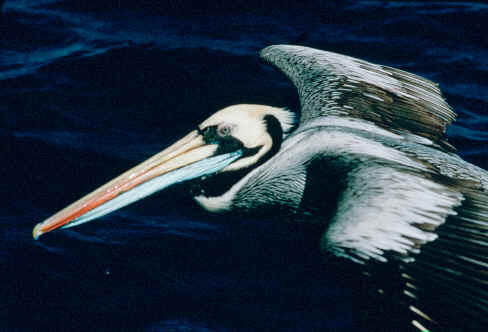
Peruvian (or Chilean) Pelican, off Valparaiso, Chile
Links:
A List of Birds & Other Wildlife during the FONT Chile Tour - November 2003
Albatrosses & Other Chilean Seabirds (with photos)
![]()
CHILE - November 2002
With Birds "Magellanic", "Austral" &
"Patagonian"
The following account written by Armas Hill, leader of
the tour.
"Magallanes"
is the southernmost region of the long country of Chile,
a country nearly 4,000 kilometers in length. It was one of various regions of
the country that we visited during our Chile Birding
Tour in November 2002. "Magallanes" is named, as is the
Strait, for Ferdinand Magellan, who sailed the waters through the region in
about 1520, as his ship circumnavigated the world.
And a number of the world's
most-southerly land and water birds, occurring in that region, are thus named,
including these we encountered during our tour: Magellanic Penguin,
Magellanic Diving-Petrel, Magellanic Flightless Steamer-Duck, Magellanic
Oystercatcher, Magellanic Plover, Magellanic Woodpecker, Magellanic Tapaculo,
and more. Some birds known by more-popular names also have alternate names "Magellanic",
such as: the Upland Goose, also called "Magellan Goose",
the Rock Cormorant, also called the "Magellan Shag", the
Dolphin Gull, also called "Magellan Gull", and an owl,
that used to be considered Great Horned, now "split" to be the "Magellan
Horned Owl".
All of these birds we saw well in southern Chile, many of them during a
beautiful clear day, with a bright blue sky and distant snow-clad mountains
across that Strait named after Magellan. The day could not have been better. The
owl we saw full-frame in a telescope, as it sat on a ledge. The sun shone
on the dusky gray bodies and the bright red bills and legs of the attractive Dolphin
Gulls that were near us at the water's edge. Joining them on the
shoreline were skuas. Three close Chilean Skuas, lined in a row,
with their orange hues in the sunlight, were also something to see.
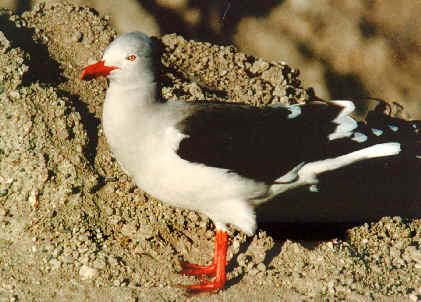
The Dolphin, or
Magellan, Gull
In the water, offshore, Magellanic Penguins swam. The previous day we had
seen them walk, or more aptly put, waddle, at their breeding colony, from their
burrows to a stone beach along the channel into which they dove to feed.
Close to a rocky shore, the Magellan, or Rock, Cormorants also
swam. Further offshore, from a ferry crossing the Strait, we watched Magellanic
Diving-Petrels fly, with swift wing-beats just above the water's surface.
And, yes, they did dive.
On land, the Magellan, or Upland, Geese were scattered about in
pairs on fields, the males black & white, the females rusty-brown. They, and
their attractive kin, the Ashy-headed Geese, and their rare cousin, the Ruddy-headed
Goose, also occur on Tierra del Fuego. Magellanic
Oystercatchers, with their young, gave whistling calls. Steamer-Ducks,
that don't fly, were along the shore of the Strait. Steamer-Ducks,
that do fly, were on a lake, where also a flock of Coscoroba Swans
fed in unison, all-white birds with pink bills. Mostly white were the Chilean
Flamingos with them, young birds not yet as pink overall as they later would
be as adults. The flamingos had just arrived on Tierra del Fuego, having
migrated from the Andes to the north.
But of all the birds we saw named "Magellanic", maybe the best
was the rare Magellanic Plover (that's really, by the way, not a
"plover"). Kind of chubby, yet attractive, with a soft-gray and white
coloration, with short pink legs, and pink eyes, the birds can be inconspicuous
when standing against shingle. But during November, their breeding time, when
they move, they're fun to watch, doing a circling "dance" that's
kind-of-a land-version of a phalarope's spin on the water. They can also act
rather like a turnstone, turning over stones as they feed. When they have their
young, it's interesting that Magellanic Plover adults are unique among
shorebirds in that they feed their offspring by regurgitation.
Soft-gray & pink Magellanic Plovers, like the darker gray and red Magellan,
or Dolphin, Gulls, only occur in southernmost South America.
During a drive, along a hilly coastal road on Tierra del Fuego, by the Strait of
Magellan, in addition to many of the occurrences just noted, we were treated to
some bonuses. As a Guanaco stood on a hilltop, and an Andean Condor
flew toward us at nearly eye-level, offshore on the surface of the water, there
must have been thousands of fish, as there were on the water, at a few places,
and above in the sky, thousands of birds. Most apparent were Albatrosses,
the Black-browed, also called "Mollymawks". In one area,
there were certainly over a thousand, both on the water and in flight.
Also numerous were silver-gray Southern Fulmars, Kelp Gulls, South American
Terns, and Chilean Skuas. There were hundreds of skuas
in the frenzy with the other seabirds, that probably also included many penguins
on and under the water's surface.
"Magellanic" was not the only adjective given again & again to
birds during our Chile tour. In the forested land of the Magellanic
Woodpecker and Magellanic Tapaculo, there were a number of birds
named "Austral". That word means "southerly", and it's the
name of a Thrush, a Blackbird, and a Parakeet (each the
southernmost of its kind in the Americas).
A nifty, dapper little bird, in the flycatcher family, that's conspicuous
in the open country, and used to be called the Rufous-backed Negrito, is
now called by some the Austral Negrito, by others, the Patagonian
Negrito.
"Patagonia" is a general
name of the vast, open, mostly flat, countyside of southern Chile and Argentina.
Other birds called "Patagonian", in that area, include: the
Patagonian Mockingbird, Patagonian Yellow-Finch, and Patagonian Sierra-Finch.
The small Brown-hooded Gull, superficially similar to a Bonaparte's,
is also sometimes called the Patagonian Black-headed Gull.
The birds, referred to above, were just some of those we enjoyed during the
tour. Torrent Ducks and Moustached Turca were also among the
favorites. Photographs of many of these southern South American birds are in our
accompanying Photo Gallery. You may wish to take a look at some birds there "Magellanic",
"Austral", "Patagonian", and others too.
The "Top Birds", as voted by participants after our November 2001
Chile Tour, included:
1 - Torrent Duck (Tremendous to watch in the swift current of a
river. Both male & female were seen well. In fact, 2 males seemed to be
courting a female.)
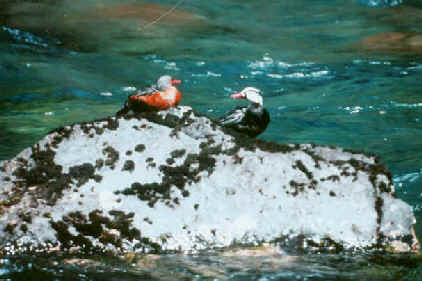
2 - Andean Condor (At one place in the Andes, quite a few flew
above us. One in flight, at eye-level, in Tierra del Fuego, was superb.)

3 - Magellanic Penguin (At the colony in the Far-South, a great experience.)
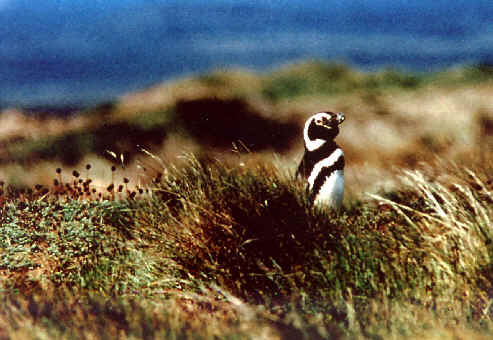
4 - Black-browed Albatross (Close to us on the pelagic trip from
Valparaiso. Also a nice number from the ferry across the Strait of Magellan, and
a huge number feeding elsewhere on the Strait.)

5 - Moustached Turca (Seen running crazily, 3 together, on a slope in the Andes, an odd-looking "Chicken-like" bird with an upright tail. Generally the most-visible of the tapaculos.)
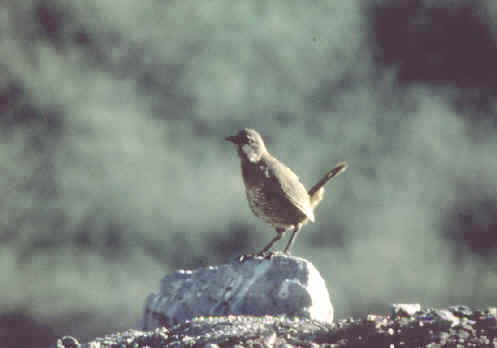
6 - Magellan Horned Owl (We watched it, as its yellow eyes watched
us, from the shadows of a ledge. Our look was "as good as it gets" in
a scope. But how was the bird's look at us thru those yellow eyes, so much
stronger than ours? )
7 - Many-colored Rush-Tyrant (Small, but so colorful. "Siete
Colores de la Laguna", that's, in Spanish, "7 colors, on the
little bird by the lake".)
8 - Cape Petrel (also called the "Pintado", a
boldly-patterned black-and-white seabird that's impossible not to like when it's
seen as we saw it, from our pelagic trip off Valparaiso.)
As many as 44 species of birds received votes in our ballots after the tour,
with each participant voting for their own "Top Ten".
A complete list of birds found during FONT Tours
in Chile.
Our first FONT tour in Chile was in November of 1990. We've been back annually
since, as it is such a beautiful and varied country, easily enjoyed, and with
birding that's "top notch". We look forward to going there again.
To
Top of Page
![]()
CHILE -
October/November 2001
The following account written by Armas Hill, the leader
of the tour.
During our Chile Birding Tour, in October/November 2001, we conducted, on November 1st, our annual pelagic birding trip on the Pacific from Valparaiso - one of the best birding pelagics anywhere. Our first such FONT trip was back in November 1990. Our half-day pelagic in 2001 was again quite a success:
On our boat, it was indicated that the capacity was 80 passengers. There was excellent viewing from the sides and front of the boat. We certainly did not have 80 people onboard, but those with us were treated to hordes of birds around the boat, during virtually the entire trip. As always, we had plenty of chum to attract the birds close to us.
There were
pelicans, petrels, penguins, and phalaropes. And more, much more.
4 species of Albatrosses
were seen during the trip
Black-browed, Gray-headed, Salvin's, and Buller's.
Shearwaters
were numerous, both
Pink-footed
and
Sooty.
Giant-Petrels
and
Diving-Petrels
were seen well,
Southern
and
Peruvian
respectively.
Storm-Petrels
were
Wilson's.
At our furthest point out, there were hundreds of birds close to our boat.
Lots of
pelicans
and
shearwaters.
Nice numbers of
albatrosses. From
40 to 50
Cape Petrels
(or
Pintados).
Southern Fulmars
flew nearly close enough for us to touch.
Terns, during the trip, included South American and Arctic, the latter from North America. Gulls included Kelp and Franklin's. The latter, particularly numerous, migrants from interior North America.
Also migrants from the Northern Hemisphere were the flocks of Red (or Grey) Phalaropes.
Add to the mix, Humboldt Penguins on the water, both White-chinned and Westland Black-Petrels, Guanay Cormorants, and Peruvian Boobies. It was a great outing at sea, off the Pacific Coast of South America.
Onshore, during our 2001 Chile Birding
Tour, some of
the highlights included: South American Painted-Snipes, Stripe-backed Bittern,
and Many-colored Rush-Tyrant
at a marsh.
At another, Plumbeous Rail, and a couple rare Black-headed Ducks.
Among the numerous waterfowl
during the tour, other notables included 3 male Torrent Ducks
along a rushing river, and pairs of uncommon Spectacled Ducks
on mountain ponds in the south.
A particularly interesting observation in southern
Chile was of about 60 Slender-billed Parakeets
feeding in a dirt field, advancing in unison across that field as doing so.
They did not pay much heed to us, as close as we were to them, so involved they
were in getting their grub.
The Slender-billed Parakeet, endemic to Chile, is a rather
fascinating large conure, with its upper bill quite long and curved,
designed for digging.
Also in southern Chile, we enjoyed an observation of Black-throated
Huet-Huet
that couldn't have been better. The large tapaculo, usually heard
more than seen, and often difficult to see, was seen well, in the early morning,
perched on a snag. It gave its call which sounds like its name. That name is
onomatopoeic. Other tapaculos
seen during the tour included the Chucao, the Magellanic, and
the enjoyable character known as the Moustached Turca. The
turca
runs about on the ground, giving its odd call, on the mid-elevational
slopes of the Andes near Santiago. As we
were leaving that area, and darkness was falling at the end of the day, beneath
a shining full moon in a very clear sky, we had good looks at flying and perched
Band-winged Nightjars. We also heard their calls.
In far-southern Chile, on Tierra del Fuego, we had some good encounters with the very rare Ruddy-headed Goose (at least 3 pairs), the localized Magellanic Plover, and the threatened Austral Canastero.
In far-northern Chile, a particularly memorable sighting was of 25 Peruvian Thick-knees, together on a sandy ridge. Nearby, in that area, we saw Peruvian Meadowlarks, with their bright red breasts, and a fine hummingbird, the Peruvian Sheartail. Yes, we were quite near Peru!
Other hummingbirds
during our Chile tour were the largest of all, the Giant, and an
attractive male Chilean Woodstar, showing a brilliant magenta gorget as
it displayed. A female Oasis Hummingbird
was seen on its nest.
This species, and other hummingbirds, can be
viewed in the FONT
Photo Gallery of Hummingbirds.
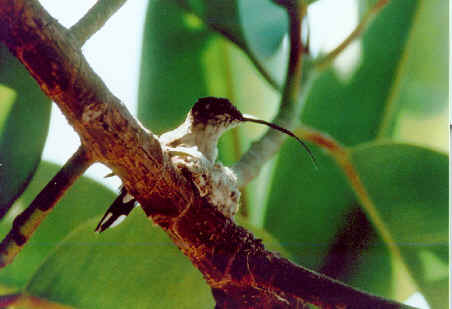
Oasis
Hummingbird at its nest,
as seen during FONT birding tour in Chile, 2001
(photo by Harold Lebo)
A complete list of birds during FONT tours in Chile, during the nearly last two decades, is also here in the website.
Upcoming FONT Birding & Nature Tours in Chile & Argentina